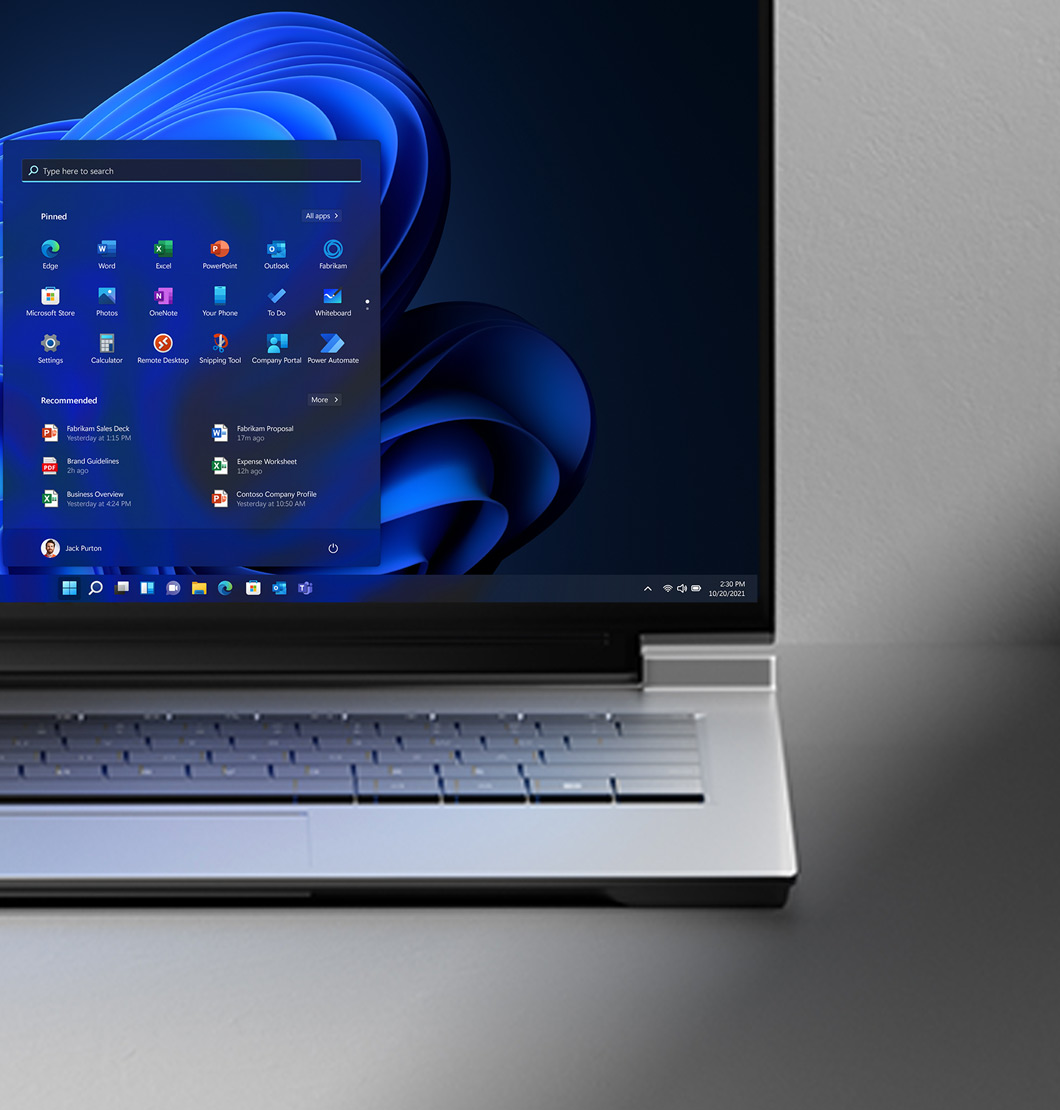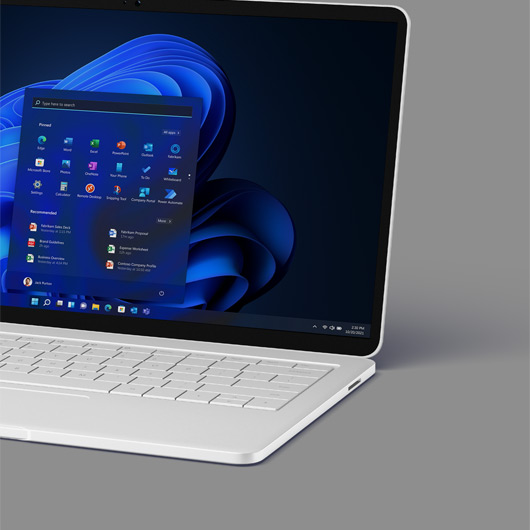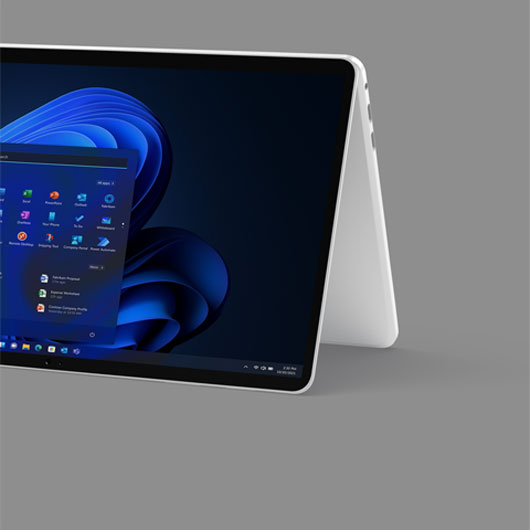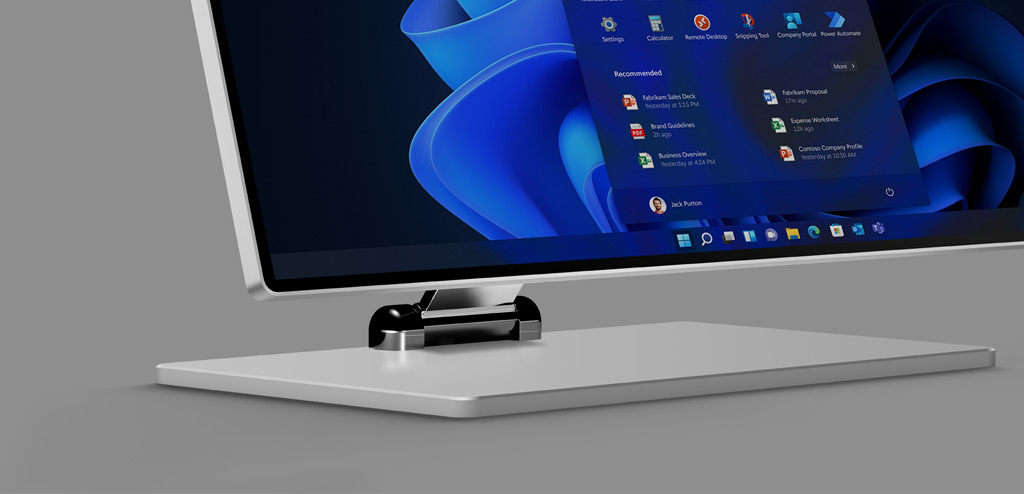Improve productivity and focus
Help your team stay productive with a more intuitive and personalized user experience.
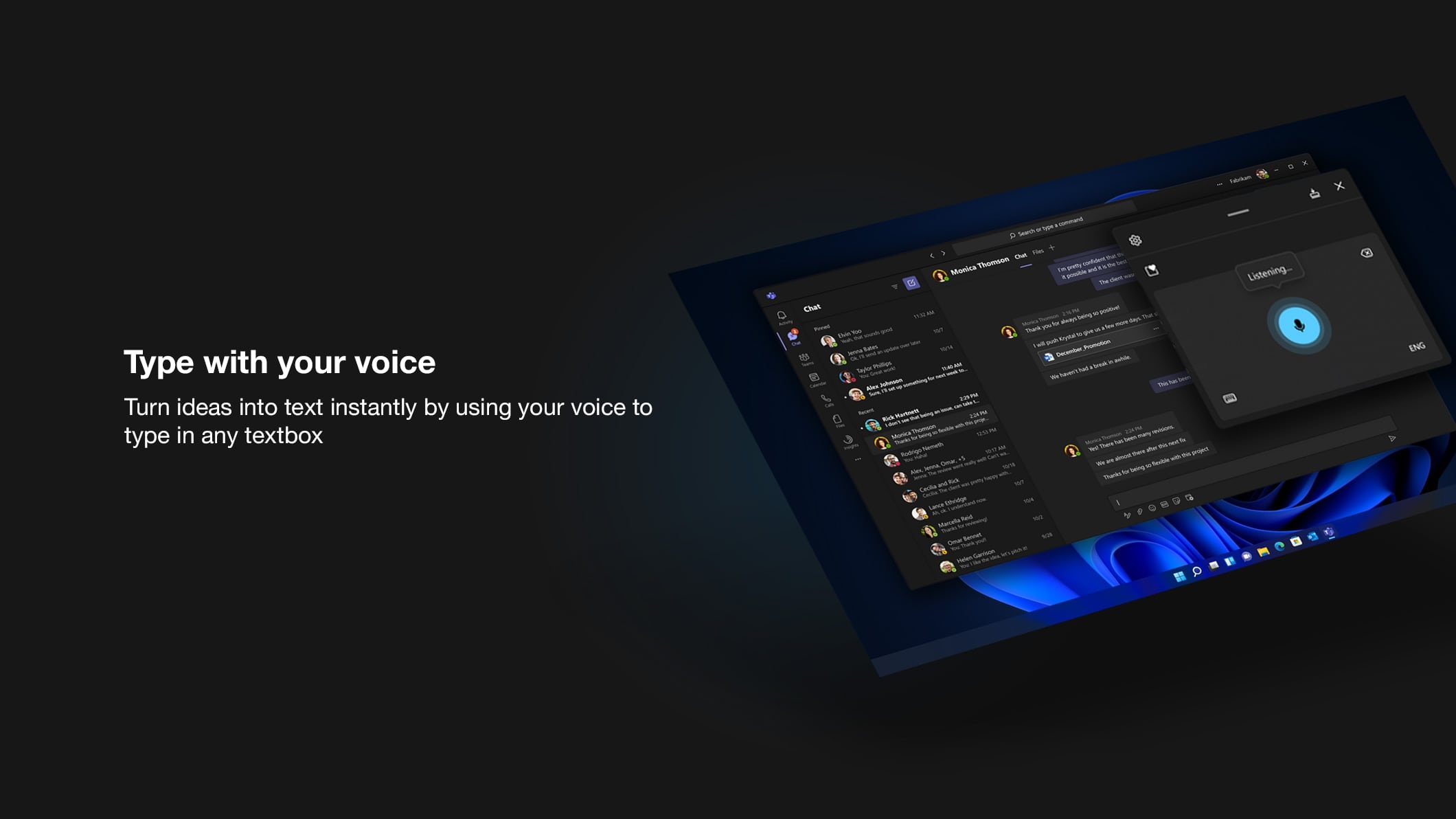
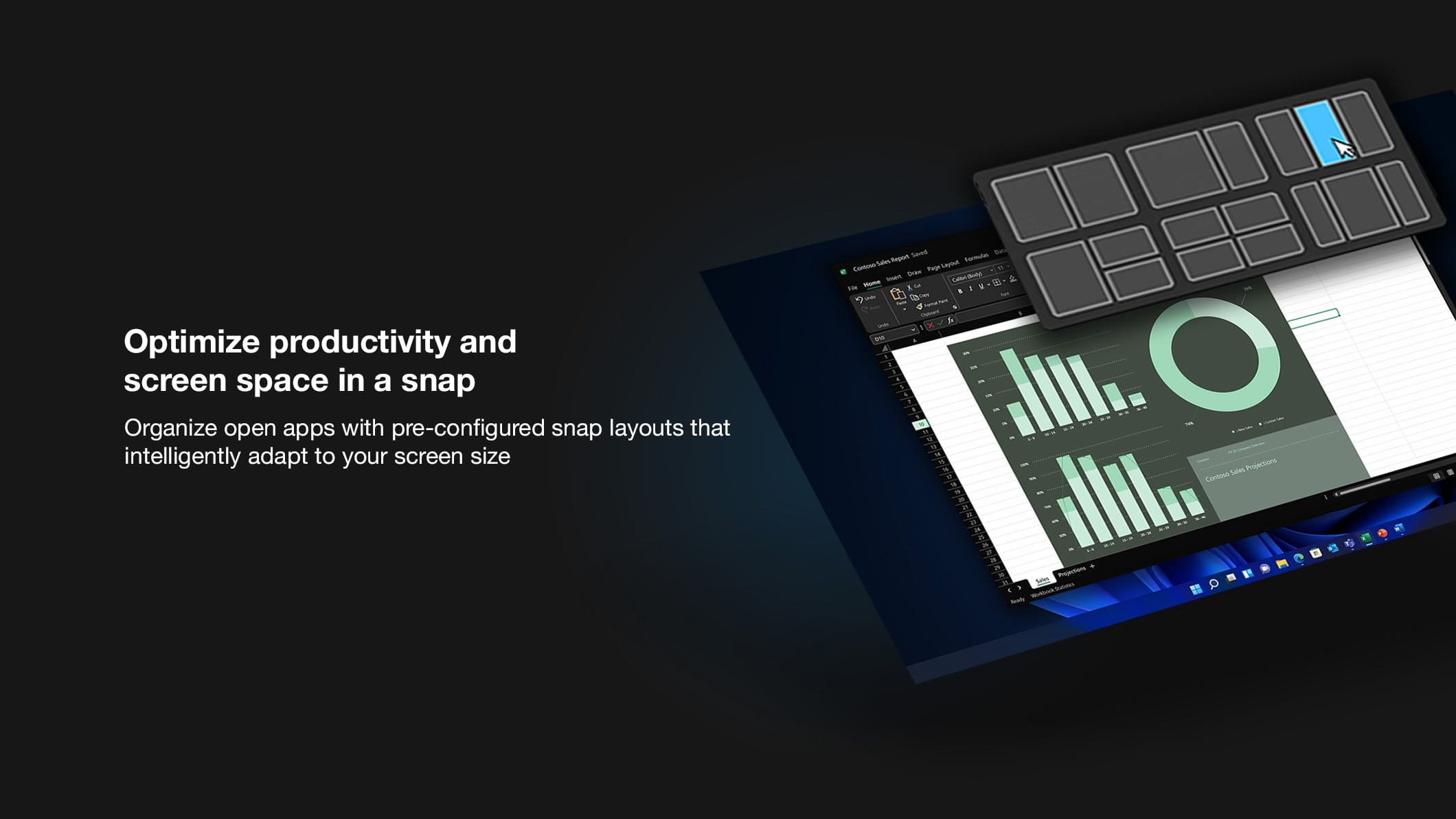
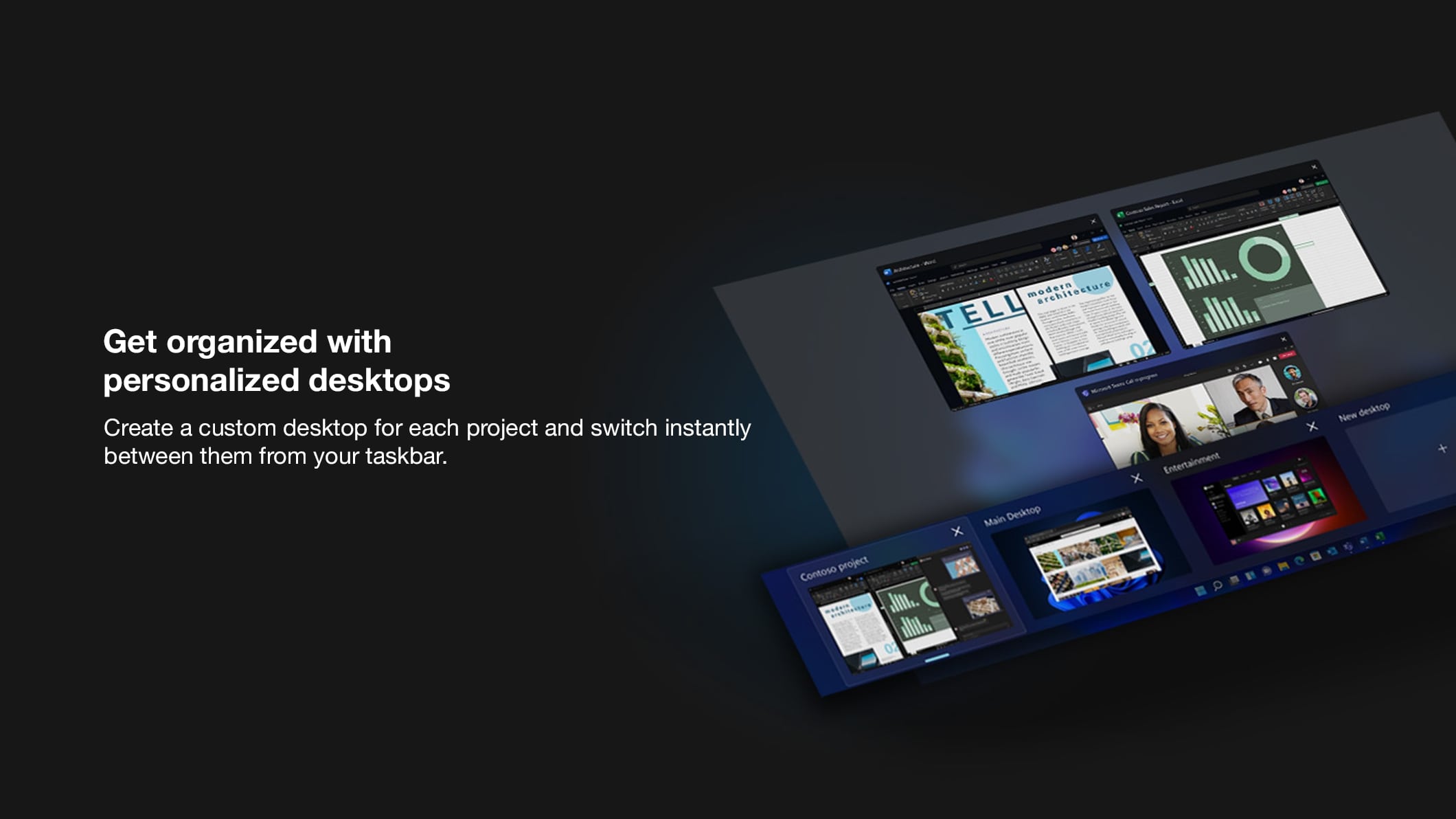
Snap groups members your layout
Snap the apps you need into a group and seamlessly return to it even when you open another app or dock and undock your monitor.
Productive from the start
Improve your focus with a simpler, more intuitive experience and effortless navigation. Get things done with fewer steps using the refreshed Start, Taskbar, and Navigation Center.
Smarter collaboration with Teams
Have effective online meetings by sharing files and muting/unmuting right from your taskbar.
Intelligent noise cancelling and blur keep the background in the background.
Mute/unmute from taskbar
Mute and unmute your mic directly from your taskbar without having to find and click on your meetings app.
Share from taskbar
Instantly share any app or window directly from your taskbar in online meetings.
Consistent for IT
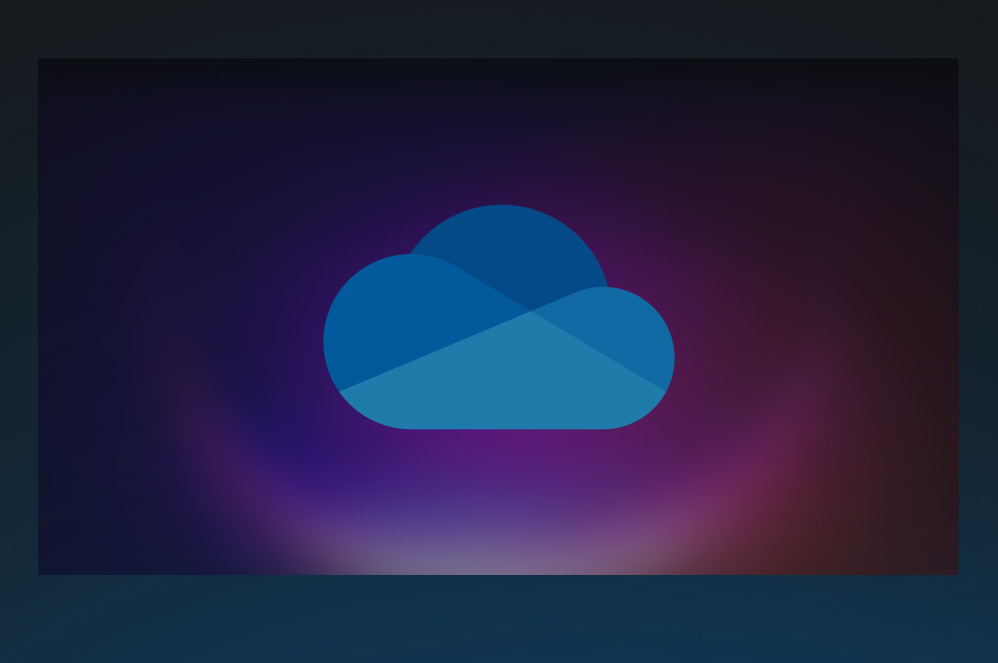
Cloud managed updates
Virtual apps will behave like local apps with Windows 11 and Azure Virtual Desktop (AVD).
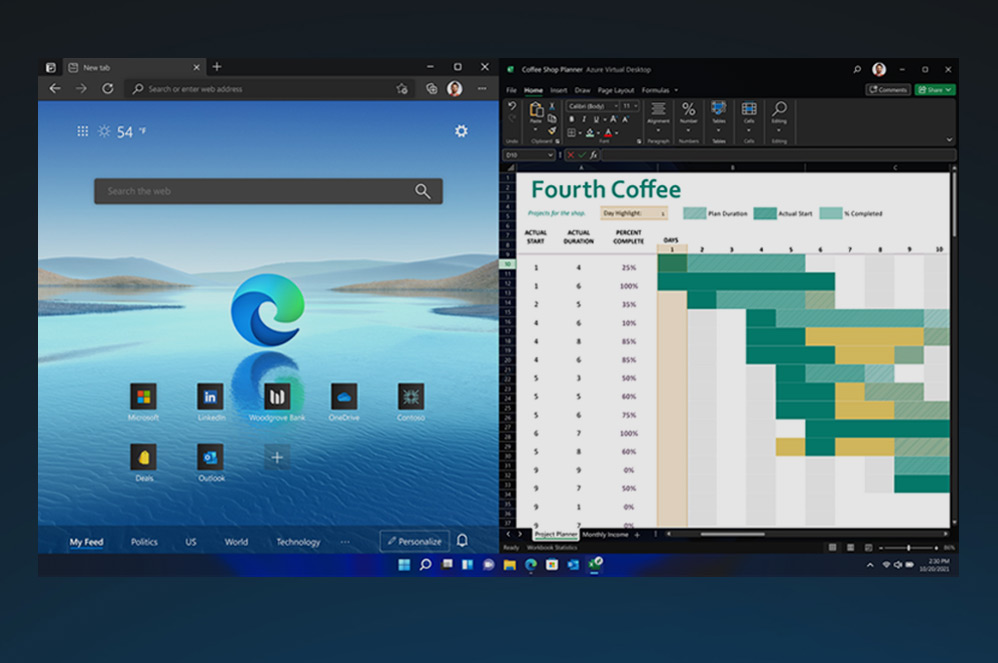
Seamless local and virtual apps
Support your hybrid workforce with zero-touch deployment using Windows Autopilot.
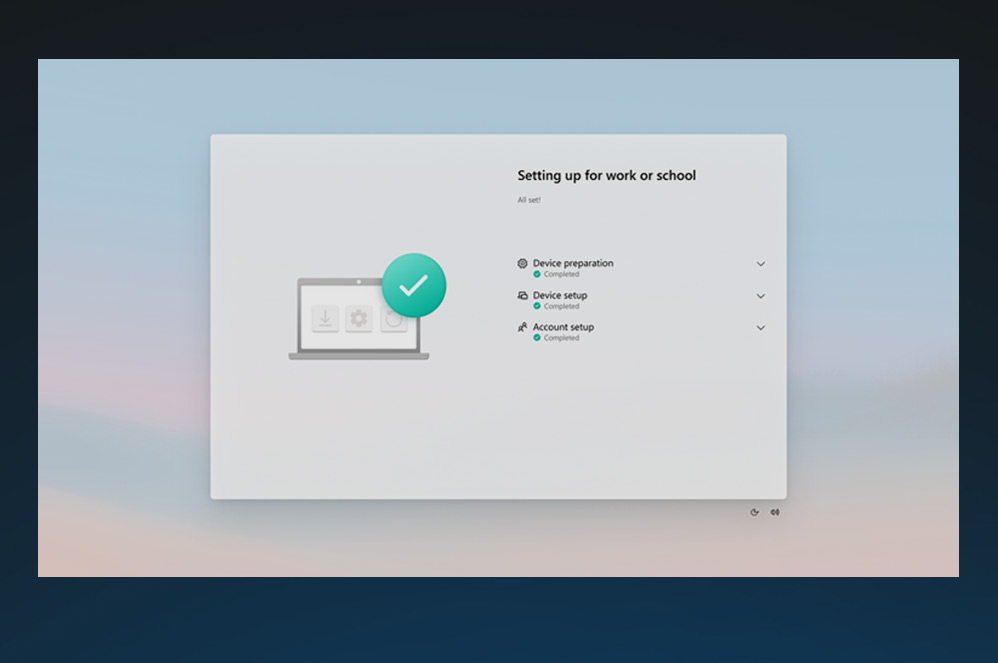
Enhanced Windows Autopilot
Approve, schedule, and monitor Windows Update content via the cloud, including security updates, drivers, and firmware.

Advanced security out-of-the-box
Modern threats require modern security with a strong alignment between hardware and software to help keep data safe and devices protected. Secure from the start, Windows 11 offers protection right out of the box with powerful, built-in hardware-based security.
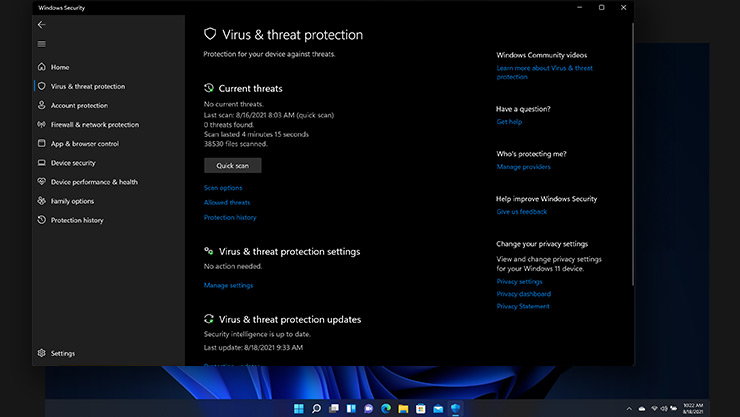
Security by default
New Windows 11 devices come with build-in security including hardware isolation, encryption, and malware protection.
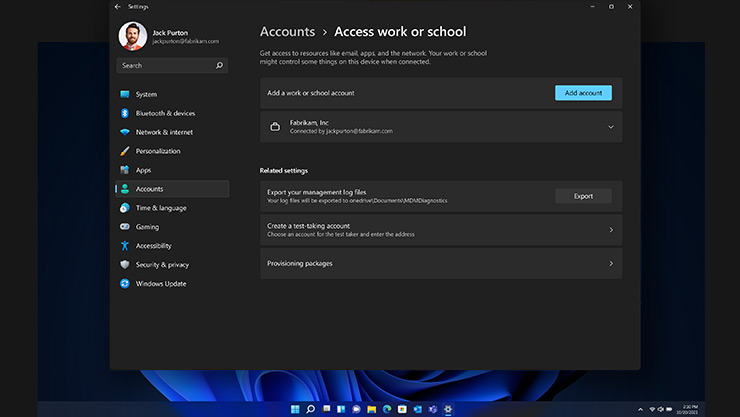
Secure remote deployment
Deploy, secure, and manage remote PCs through the cloud, in compliance with your company’s policies.
Freedom of choice
employee with the right device for higher retention and satisfaction.
Seamlessly transition to Windows 11
The next evolution of Windows is here. We have great tools for business of all sizes to help with the migration to Windows 11.

Start your plan
Learn about your existing deployment tools that will help define and assess your readiness to make Windows 11 deployment easy.

Start your plan
Windows 10 apps will be compatible, backed by App Assure. Test critical apps and policies using a preview with Microsoft Insider Program.

Deploy to your organization
Use your existing tools to implement pilot and broad deployments, accelerate velocity and simplify the process.
Check for compatibility
Small business owners can download the PC Health Check app to see if their PCs can run Windows 11 (Requires Microsoft Account). If your company’s IT manages updates please contact them about getting Windows 11. If you are the IT administrator, you can use endpoint analytics to understand your organization’s compatibility at scale.
PC Health Check
Most PCs on the market should be compatible with Windows 11. To check if your device can run Windows 11 download and run the PC Health Check application.

Minimum system requirements
Windows 11 is designed to for powerful security and a great user experience across a wide range of devices and configurations.
Processor
1 gigahertz (GHz) or faster with 2 or more cores on a compatible 64-bit processor or System on a Chip (SoC)
Memory
4 GB RAM
Storage
64 GB or larger storage device
System firmware
UEFI, Secure Boot capable
Graphics card
DirectX 12 compatible graphics / WDDM 2.x
Display Resolution
>9″ with HD Resolution (720p)
Certain features require specific hardware. See detailed system requirements
Frequently asked questions about Windows 11
Windows 11 has all the power and security of Windows 10 with a redesigned and refreshed look. It also comes with new tools, sounds and apps. Every detail has been considered. All of it comes together to bring you a refreshing experience on your PC.
PCs with Windows 11 pre-installed will be available later this year.
It depends! Many different manufacturers will offer a variety of devices that will run Windows 11. All at different price points.
PCs that come with Windows 11 pre-installed will be available later this year. Details to come.
If your accessories worked with Windows 10 and meet the Windows 11 requirements, they should work with Windows 11. If you want to be sure, please check with your accessory manufacturer.
Most Windows 10 PCs currently being sold will be able to upgrade to Windows 11. For the PC to be able to upgrade to Windows 11, it must meet the minimum hardware specifications and specific hardware is required for some features [Windows 11 Specifications – Microsoft]. The upgrade rollout plan is still being finalised but is scheduled to begin late in 2021 and continue into 2022. Specific timing will vary by device.
There are a few ways to find out. If you’re currently shopping for a new PC look for “Free upgrade to Windows 11 (when available, see below)” on the device product page. You can also ask your retail sales professional to confirm.
If your existing Windows 10 PC is running the most current version of Windows 10 and meets the minimum hardware specifications [Windows 11 Specifications – Microsoft] it will be able to upgrade to Windows 11. The upgrade rollout plan is still being finalised, but for most devices already in use today, we expect it to be ready sometime in early 2022. Not all Windows 10 PCs that are eligible to upgrade to Windows 11 will be offered to upgrade at the same time. To see if your PC is eligible to upgrade, download the PC Health Check app. Once the upgrade rollout has started, you can check if it is ready for your device by going to Settings/Windows Updates.
The minimum hardware requirements are available at Windows 11 Specifications – Microsoft.
If you’d like to see if your current PC meets the minimum requirements, you can download the PC Health Check app [Upgrade to the New Windows 11 OS | Microsoft].
Yes! Windows 10 continues to be a great version of Windows. We have committed to supporting Windows 10 until 14 October 2025.
Upgrades to Windows 11 will begin to roll out late in 2021 and continue into 2022. During this time, we will be doing some behind the scenes testing and validating for your specific PC. Windows Update will provide an indication if and when your PC is eligible. You can check to see by going to Settings/Windows Update.
It’s free. But only Windows 10 PCs that are running the most current version of Windows 10 and meet the minimum hardware specifications will be able to upgrade. You can check to see if you have the latest updates for Windows 10 in Settings/Windows Update.
An update can consist of bug and security fixes and new features in a version of Windows. They tend to roll out throughout the year. An upgrade is when you change versions, for example moving from Windows 10 to Windows 11. Or moving editions from Windows Home to Windows Pro.
The free upgrade offer does not have a specific end date for eligible systems. However, Microsoft reserves the right to eventually end support for the free offer. This end date will be no sooner than one year from general availability.
Yes. You do not have to upgrade to Windows 11. We will continue to support Windows 10 until 14 October 2025.
No. Windows 11 and Windows 10 require approximately the same amount of disk space. During the upgrade process, however, extra space is required. Windows will clean up this extra disk space about ten days after the upgrade is complete.
Windows 11 is the newest version of Windows. However, we will continue to support Windows 10 until October 2025.
By default, all your files and data will transfer. However, we recommend backing up your files before installation. Learn more about OneDrive PC folder Backup here.
Yes. After you have installed the Windows 11 upgrade there is a 10 day period where you can move back to Windows 10 while keeping files and data that you brought along with you. After the 10 days you will need to back up your data and do a “clean install” to move back to Windows 10.
Downloading and installing Windows 11 will most likely take longer than a typical Windows 10 feature update. You can use your PC while you’re downloading it and then you have the option to schedule the install to happen at a specific time when you aren’t planning on using your PC.
If your PC meets the minimum hardware specifications, the Windows 10 Home edition in S mode can upgrade to the Windows 11 Home edition in S mode. If your Windows 10 PC is running the Pro edition in S mode you will need to switch out of S mode to upgrade to Windows 11 Pro. Windows 11 Pro edition is not available in S mode.
You can use the PC Health Check app to determine if your device is eligible to upgrade to Windows 11. Many PCs that are less than four years old will be able to upgrade to Windows 11. They must be running the most current version of Windows 10 and meet the minimum hardware requirements.
Head Office
1005 Metropolitan Ave, Corner Kakarong, Makati, 1205 Metro Manila
Cebu Office
2F Unit 202-204, GMC Innovation Center, M. J. Cuenco Ave, Brgy San Roque Cebu City 6000
Davao Office
Unit 11, Plug Holdings Bldg, 141 R. Castillo St, Agdao, Davao City, 8000 Davao del Sur
